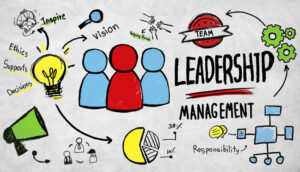Well functioning teams are essential to running a well functioning call centre. If teams do not work effectively, the whole structure of the call centre is compromised.
In this article, Gwenllian Williams gives us an insight into how to put a team together effectively .
A team can be an established work team within a department, a virtual team in different locations or a project team put together to address a specific project. Whatever the nature of the team, leadership is required. The leadership needs to pull the team together as fast as possible and then keep it together.
When put together a team goes through four key phases:
Forming
This is the stage in which team members come together and start to understand each other and their roles. The role of the manager here is to choose the right people and then clarify their roles. If this phase is not well managed then there will be role confusion and inability to work co-operatively.
Storming
In this phase there is a period of settling, often with some confusion, as team members work out their roles and the boundaries between each other. If this phase is not managed well conflict will arise.
Norming
In this phase, team members gain clarity about their specific roles and exactly what is and what is not expected of them. If this phase is not well managed team members will tend to pull apart and do their own thing.
Performing
Having gained clarity, the team starts to deliver. If the former three stages have been well managed performance will be effective. If they are not well managed, performance will be under par.
The challenge of a team leader is to guide their team to the performing stage. It should be remembered that every time there is a change of personnel, the team goals go back to the forming stage. In order to get their team through the stages quickly and effectively, team leaders need to:
- Be very clear in the selection criteria. Select people on the basis of both experience and attitude. In the selection process, assess team orientation and co-operation
- Set clear team goals. If team members know exactly what they are trying to achieve together it is easier to focus on the important rather than the dross
- Set very clear individual role responsibilities. One issue which creates problems in the storming phase is when team members are overlapping and end up competing or conflicting
- Focus on deliverables. If a team is focused on getting the job done rather than competing for position they will tend to pull together
- Treat everyone equally. Differential treatment will keep less favoured team members in the storming phase and they will disrupt
- Praise team members who move into the norming stage and start delivering exactly what is asked of them
- Ensure that a team that has reached the performing stage is given plenty of positive feedback and then set the next level of achievement.
Once your team has been pulled together the next challenge is to maintain its performance. This takes good leadership. A good team leader:
- Sets challenging objectives which are stretching but achievable
- Keeps the team focused
- Treats each team member as an individual but is consistent and fair
- Addresses issues or conflicts before they become team breakers
- Communicates openly and frequently
- Provides protective cover for the team
- Integrates new team members quickly to get the team through the four phases as fast as possible.
All this is well and good, but every team leader faces situations when there is a distinct danger of the team failing to pull together. Typical situations include:
- Significant change in team membership or merging of two teams
- Badly managed change which is causing confusion
- Disruptive team members who are deliberately causing rifts in the team
- Downsizing which is causing stress and guilt within the team
When facing such situations team leaders will find that the following approaches help:
- When facing significant change or merger, remember that this is effectively a new team. Go back to the forming stage and clarify roles and objectives quickly. If possible have a team event to pull people together socially
- Facing badly managed change, pull your team together with a ‘Face the Change’ event. Acknowledge the challenges but get your team geared up with plenty of motivational talk about facing the change together and pulling through
- When facing a disruptive team member, take the person off for a firm face-to-face talk and address the issue early. Spell out the effect of their behaviour and set down clear objectives which focus on team support and encouragement not disruption
- When facing downsizing – and this is all too likely in the coming year – you face the greatest challenge of all. The key to success is honesty, openness and ensuring people know what is going on around them. Stressed people make up what they do not know – so it is also important to tell them when there is no news. If you do have to reduce the size of your team ensure that people keep their dignity and are given full support. For those remaining behind, acknowledge their discomfort but also focus them on the goals. A failing team cannot help those who have had to leave.
In short, pulling a team together is about selecting the best, creating clarity, setting goals, maintaining communication, driving performance and facing the inevitable business challenges in a way which is designed to keep the team glued together. This is not an easy challenge for any team leader, but when you get a team really performing it is one of the most rewarding aspects of the role.
__________________________________________________________________
Gwenllian Williams is a director of deWinton-Williams Business Consulting. 
deWinton-Williams helps businesses achieve potential through people and consults on the full range of HR solutions including strategic competency frameworks, selection, development and change.
You can contact deWinton-Williams on 0207 372 4997 or contact Gwenllian through the website www.dewinton-williams.com
Author: Jo Robinson
Published On: 4th Jun 2008 - Last modified: 31st Jan 2025
Read more about - Call Centre Questions, Motivation, Team Building, Team Management
















I think that the Apprentice on TV gives an interesting insight in how the teams can perform during the “storming phase”
Because they keep on chnaging the teams they don’t really ever get on to the “performing phase”.
This is really great stuff. I am preparing a training guide for people that will be leading out on mission trips and this is going to help so much. Thank you Gwenllian.
Thank you for your information. Our branch is currently under a new management team, and we are having difficulty pulling together. I am going to share this with our crew!